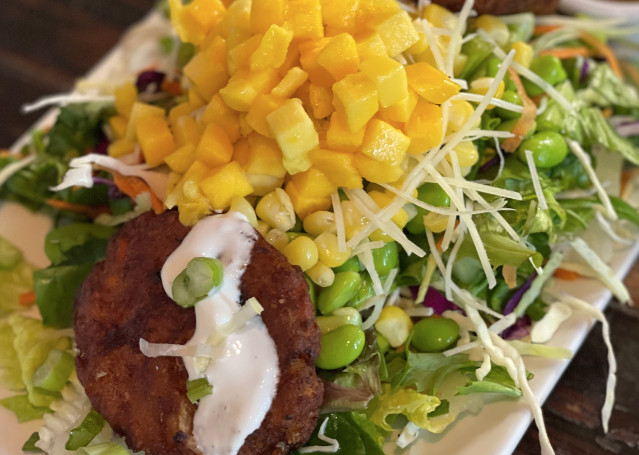
There’s a reason why the classic grilled cheese you ordered at a popular restaurant seems far better than the one you made at home, even if both sandwiches are made with the same ingredients.
Let’s assume that the restaurant uses the same bread and cheese you do to make your homemade grilled cheese. The restaurant grilled cheese might have been grilled in the panini press, giving it beautiful parallel char marks before it was cut into thin, dippable slices and arranged next to a small pile of delicate greens. The grilled cheese you made at home, on the other hand, probably came off the pan looking like a bland square served next to a splattered squeeze of ketchup.
Even with all ingredients being equal, you know which sandwich sounds better, and that’s because of plating. We eat with our eyes, too, which is why food presentation can make or break a meal. Use these tips from our kitchen to start plating like a pro.
Plan Your Plate
Before you start plating, take a moment to visualize the final dish. Consider the flavors, textures, and colors of the ingredients. Think about the overall balance you want to achieve and the story you want to tell through your plate. A well-thought-out composition will guide your plating decisions and result in a visually appealing dish.
There’s No Need to Fill Negative Space
Negative space refers to the empty areas on the plate that surround the main components of the dish. It allows the eye to rest and helps highlight the focal points. Embrace the power of empty space and avoid overcrowding the plate. Use it strategically to create a sense of balance and harmony in your presentation.
Play With Colors
Color is one of the most influential factors in food presentation. Incorporate a variety of vibrant hues to make your dish visually captivating. Consider contrasting or complementary colors to add visual interest. For example, pair bright green vegetables with deep red sauces or use colorful edible flowers as garnishes. Remember that natural, fresh ingredients tend to have appealing colors, so focus on seasonal produce for a stunning palette.
Use Texture and Height
Adding varying textures and heights to your plate creates dimension and visual appeal. Consider the different textures of your ingredients and use them to your advantage. For example, combine a crispy element, such as a wafer or toasted breadcrumbs, with a creamy sauce or a smooth puree. Build height by stacking ingredients or using props like edible microgreens or sprouts.
Garnish With Purpose
Mastering the art of sauce and drizzle placement can instantly elevate your plating game. You can also use garnishes that are edible, like fresh herbs and flowers, to transform a dish from ordinary to extraordinary.
Experience our café and bakery’s old-world charm – and Southern hospitality – at breakfast Mon-Fri (9-11 am) or Sat (8-11 am), at lunch Mon-Sat (11 am-3 pm), or at Sunday brunch (8 am-2 pm). We can’t wait to see you!
HOURS OF OPERATION
Breakfast: Mon-Fri 9-11am, Sat 8-11am
Lunch: Mon-Fri 11am-3pm, Sat 11-3pm
Sunday Brunch: Sundays 8am-2pm
 | The Good Food Awards or GFAs is an annual award competition for outstanding American craft food producers. |
 |
The Cottage- 2022 Readers Choice Winner: Great news! The Cottage won Bluffton’s Favorite European Restaurant! |